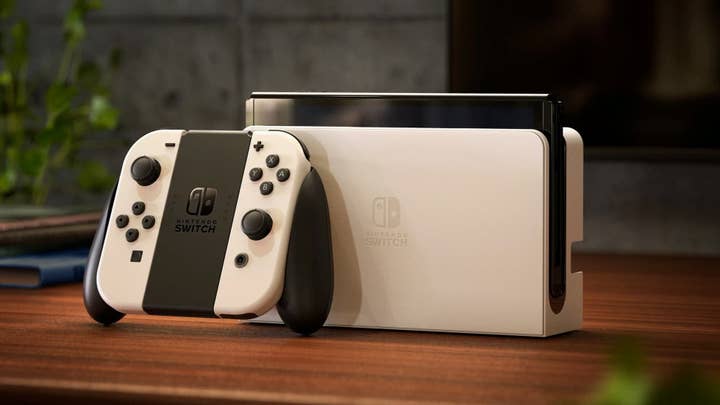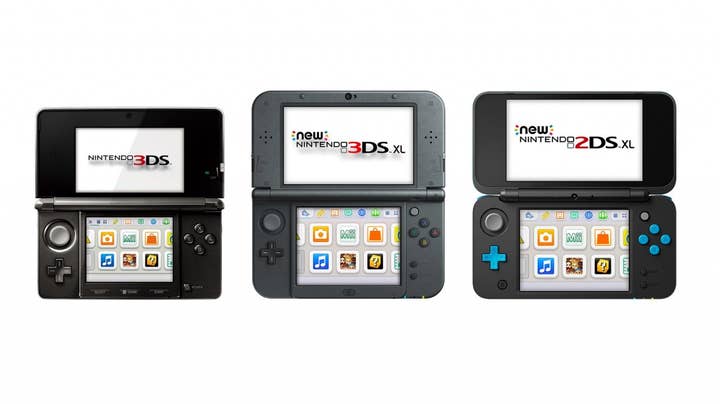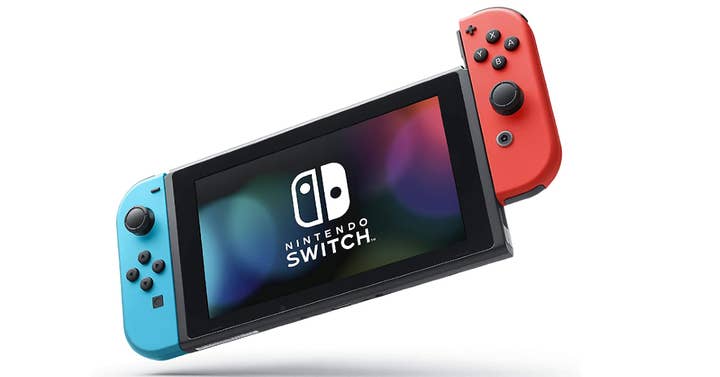Can a Switch successor be third time lucky for Nintendo? | Opinion
The question of what Nintendo does after Switch is increasingly important, but breaking the curse of unsuccessful console follow-ups is a major concern
Good leadership is always worried about the future.
It's a fairly basic notion, but no less true for it; the role of a good leader is to be farsighted, scanning the horizon for threats and challenges, rather than comfortably resting on their laurels, no matter how well-earned they may be.
As such, it's a good thing that Nintendo president Furukawa Shuntaro says he, and the company as a whole, are very concerned about the transition to the next hardware platform -- the real problem would be if he wasn't worried, or blithely assuming that the momentum of Switch will carry Nintendo over the transition smoothly and effortlessly.
Nonetheless, we also need to acknowledge that Furukawa has good reason to be concerned. The Switch has performed magnificently, racking up almost 108 million unit sales to date -- its trajectory boosted, certainly, by raised demand during the pandemic, but still doing very well even as lockdowns and restrictions around the world eased off.
On each of the previous occasions, it has fumbled the ball badly when it came to launching a successor
It's a tremendous success for the company, but those are precisely the laurels upon which Nintendo cannot afford to be resting right now, because it's not the first time in recent decades that Nintendo has had a tremendously successful platform -- and on each of the previous occasions, it has fumbled the ball badly when it came to launching a successor.
The immense success of the DS was followed by the more lukewarm 3DS, which ultimately performed reasonably well but still struggled to notch up even half of the lifetime sales of its predecessor. Rather more dramatically, the Wii was succeeded by the Wii U, whose lifetime sales were around 12% of its predecessor and which was ultimately discontinued after just a few years on the market.
Nintendo needs to be thinking very hard about how to avoid a repeat of that mistake with the Switch -- or rather, it needs to have reached some sound conclusions on the matter, because the clock is ticking.
The Switch still feels like a fairly new device in some regards, but that's largely down to the time-warping effects of the pandemic. It's actually been on the market for more than five years, and it's entirely likely that the spike and subsequent decline of pandemic-related demand for the system over the past two years has masked an underlying cyclical decline as the console starts bumping up against its saturation point in some markets and demographics.

There's some dry powder left, of course -- demand for the OLED version of the console continues to outstrip supply, showing the appetite among high-end consumers for a better version of the existing consoles, and suggesting that a spec-bumped Switch Pro could probably drive sales among some market segments. But all in all, planning for what comes next needs to be well underway at this point.
Furukawa's comments on this matter in the investor briefing weren't exactly definitive, but they pointed at a few key areas where Nintendo's thinking is going; he mentioned using online services to build consumer relationships than span across console generations, and extending those long-term relationships by pushing IP into non-gaming spaces.
The perennial popularity of Mario and Pokemon hasn't stopped Nintendo console systems from flopping hard in the past
Both of those strategies are... fine. The former is essentially the Xbox Live strategy (or, indeed, the PlayStation Plus/iOS App Store strategy) of building an ecosystem which encompasses multiple different hardware devices and which gives consumers a software library, friends list, personal profile and various other services which ensure that the path of least resistance when the time comes for a hardware upgrade is to stick with platforms within that ecosystem.
Nintendo's track record here isn't so much spotty as downright shabby -- over the years the company has had a confusing set of somewhat interrelated online services, none of which had the kind of functionality that deserves the term "ecosystem," and it's only with the Switch Online service that it's finally started to put the pieces of a more comprehensive service together. It's a good starting point, but not yet at the point where online services will provide enough momentum to bring consumers across the generational chasm.
The second strategy, meanwhile, is the tried-and-true Disney approach -- build and reward long-term engagement with IP, spanning not just generations of hardware but generations of human beings, using things like movies, comics, merchandise, and theme parks to give consumers even more points of contact with the IP and deepen their engagement with it.
That's great, and is arguably already Nintendo's single most important point of differentiation from all of its industry competitors -- but as enormous an asset as it may be, the perennial popularity of Mario and Pokemon hasn't stopped Nintendo console systems from flopping hard in the past.

Put simply, the next Nintendo console needs to win over consumers on its own terms -- independently of any efforts at building long-term engagement through online services or IP expansion.
That brings us back to the core question of Nintendo's follow-up strategy for its successful consoles; the experience of the 3DS and Wii U tends to suggest that this strategy is broken and needs to be reformulated in key ways. Yet that conclusion may be misleading in its own way, because in truth, both the 3DS and the Wii U got a lot of things right -- and in repairing the egregious things they got wrong, Nintendo needs to be careful to ensure the baby isn't being thrown out with the bathwater.
The core concepts behind both the 3DS and Wii U were, after all, pretty much exactly what consumers want from a successor to a popular platform -- building upon the concepts of the previous devices while retaining a clear identity and, crucially, maintaining perfect backwards compatibility.
In repairing the egregious things they got wrong, Nintendo needs to be careful to ensure the baby isn't being thrown out with the bathwater
The conclusion that this was the wrong approach, and that Nintendo needs to try something completely different for the successor to the Switch, is a dangerous one -- the Switch has tapped into a fantastic device format (just look at the Steam Deck for proof, given that imitation is the sincerest form of flattery) that the company would do well to double down upon.
Evolving the concept, maintaining backwards compatibility, and even continuing to support the original Switch as much as possible so casual owners don't feel abandoned, are all solid approaches to managing a generation shift, and things Nintendo got right with its previous follow-up consoles.
If that was the right approach, though, what actually went wrong? Where are the lessons Nintendo needs to learn in order to avoid disaster with the Switch follow-up? One major problem, at least, was that the company seemed to have no idea how to communicate the notion of a generation shift to its audience -- especially to the relatively casual audience who had bought into the DS and Wii late in their lifespans, a pattern which has been repeated with the Switch.
An over-emphasis on continuity left many consumers unclear about what these new devices were (a new console? An add-on? A rebrand?) and why they had to buy them in order to play some new DS and Wii games. This confusion even flowed from the branding, with the Wii U branding being especially egregious in terms of confusing people about whether this was a new console or just an add-on for the Wii.

Moreover, the design of both of these devices suggested that the company wasn't comfortable with the idea of "playing it straight" with a follow-up; hewing to its roots as a toy company more than anything else, it seemed to feel that any new platform needed a key distinguishing feature, just as the DS and Wii themselves had very clear USPs compared to other consoles on the market.
Whatever replaces the Switch needs to studiously avoid being “Switch + a largely pointless gimmick”
That's not a bad instinct as such, but in these cases it led to a heavy reliance on technology gimmicks to communicate the difference between the new devices and their predecessors -- the 3D screen of the 3DS, and the second screen of the Wii U.
These truly were gimmicks; they weren't actually good or useful, and the nature of them didn't actually help the confusion at all, since "it's a DS where you can play the games in 3D," or "it's a Wii but with a second screen on the controller for menus and stuff," are exactly the kind of description the company should have been straining to avoid, and yet precisely the way a layman would have explained either device. Whatever replaces the Switch needs to studiously avoid being "Switch + a largely pointless gimmick."
The balance between continuity and generational change is tricky -- but hardly unmanageable.
In fact, the most straightforward route available to Nintendo -- a Switch 2 which is largely the same device format but significantly more powerful -- is arguably also one of the easiest to explain to consumers, since even relatively casual game consumers have become deeply familiar with the idea of this kind of hardware update (in consoles, computers, mobile phones, and all sorts of other realms) in recent decades.
People didn't get tremendously confused when the PS2 superseded the PlayStation, or at any generational transition since then -- so for all that it would be fascinating to see what kind of gimmick the company pulls out of the hat this time, it would likely be for the best if the follow-up to the Switch is just an improved, faster, better console built on updated technology, and branded with something as boring and easy to understand as a regular old "2" after the name.
The Switch is already a damned near perfect solution to the riddle of how to fit Nintendo's home and handheld console lines together; gimmicks would just be gilding the lily, and risk yet another repeat of the confusion sown in the company's previous failed generation transitions.
Instead, Nintendo should dig deep into its history and do something it hasn't done since 1990 -- leave the wheel un-reinvented and give the market a better, upgraded, version 2.0 of a console they've already come to love.









